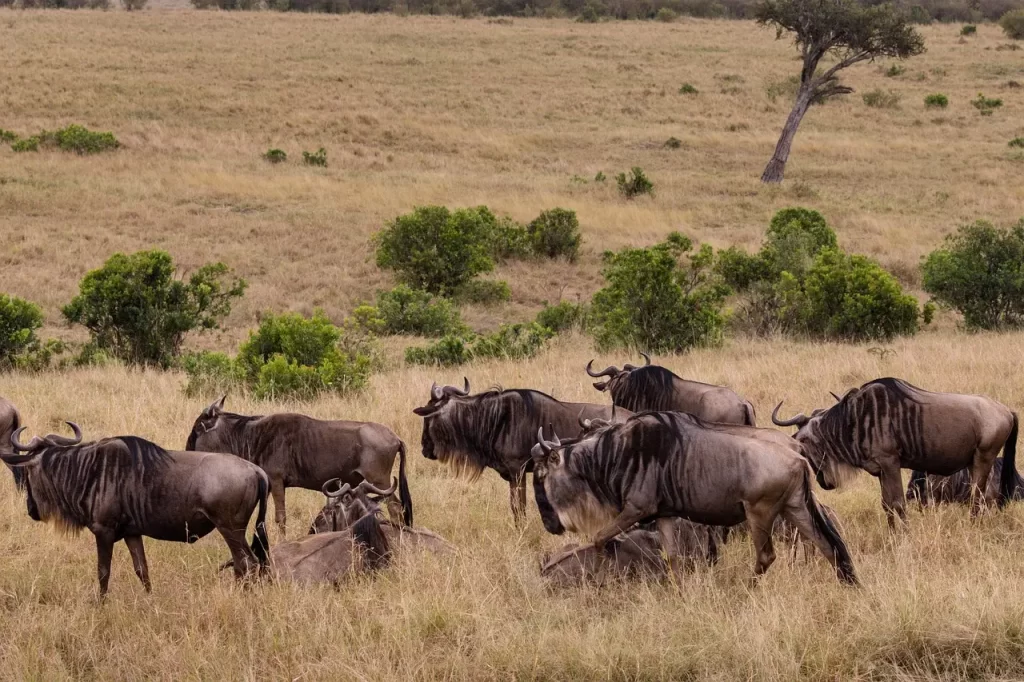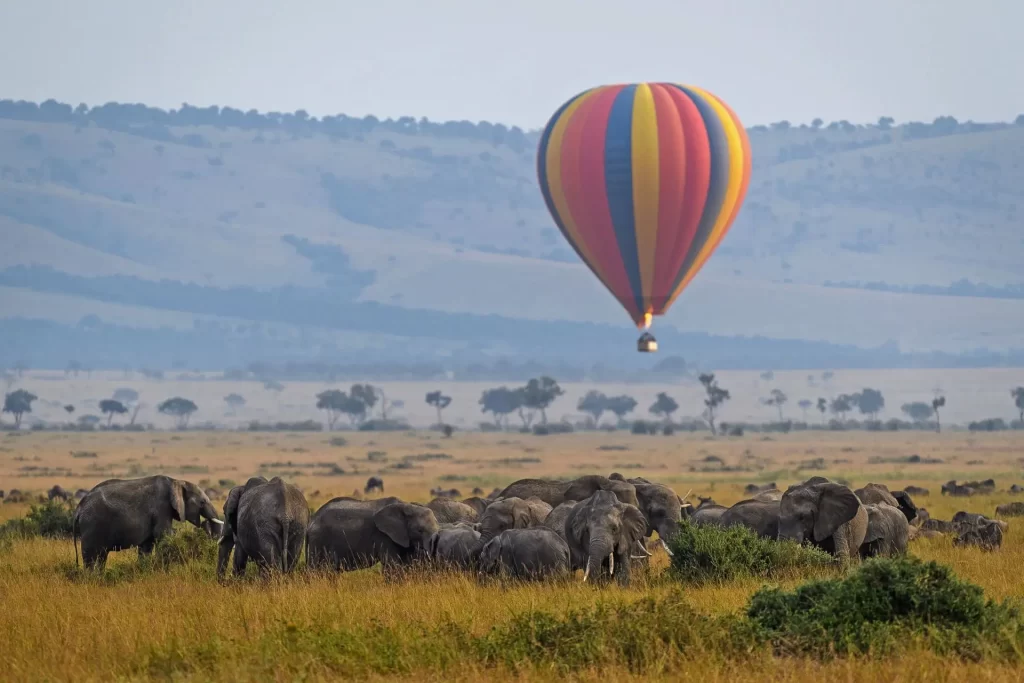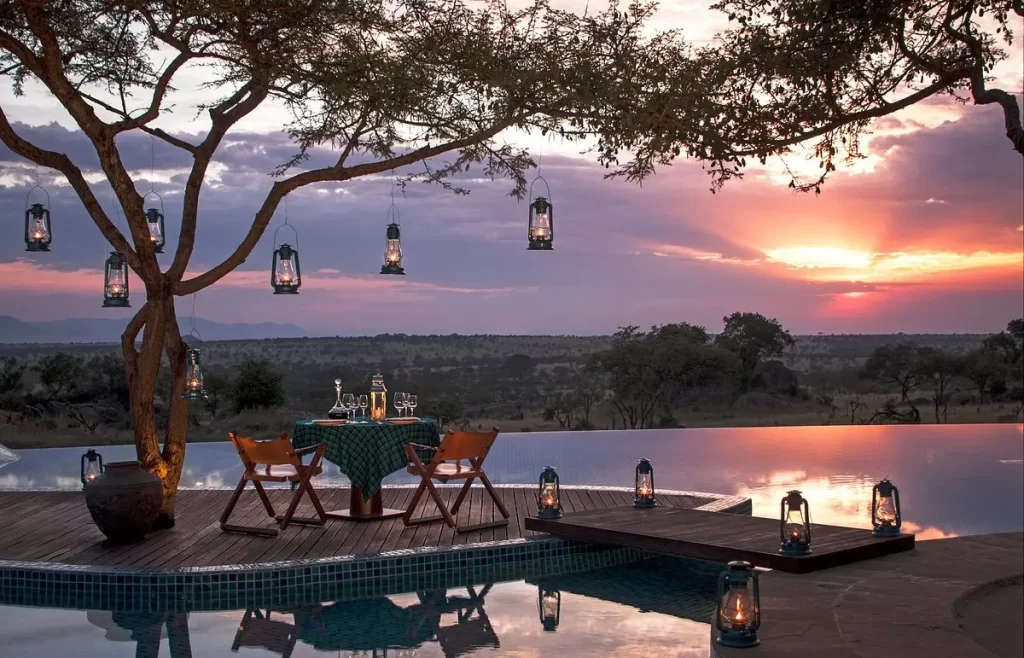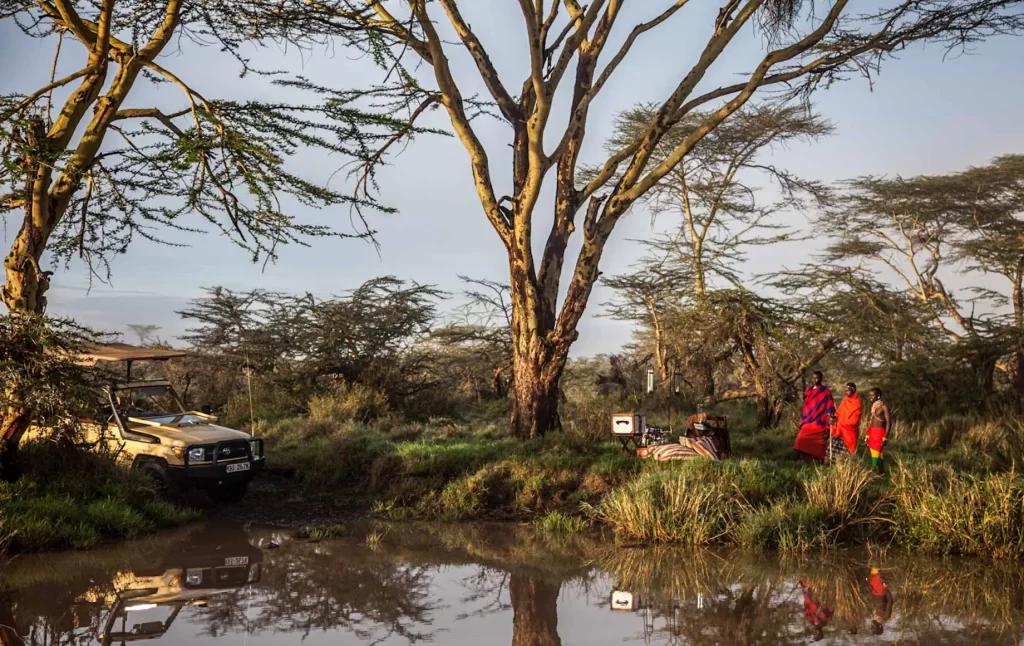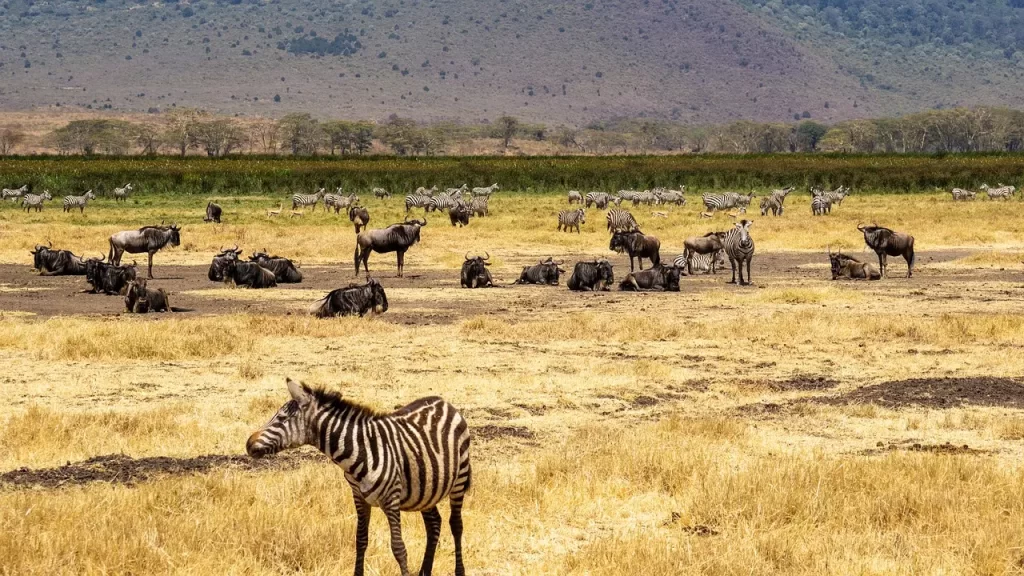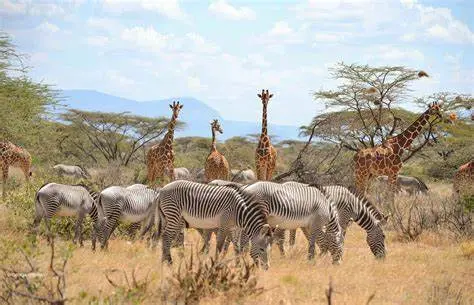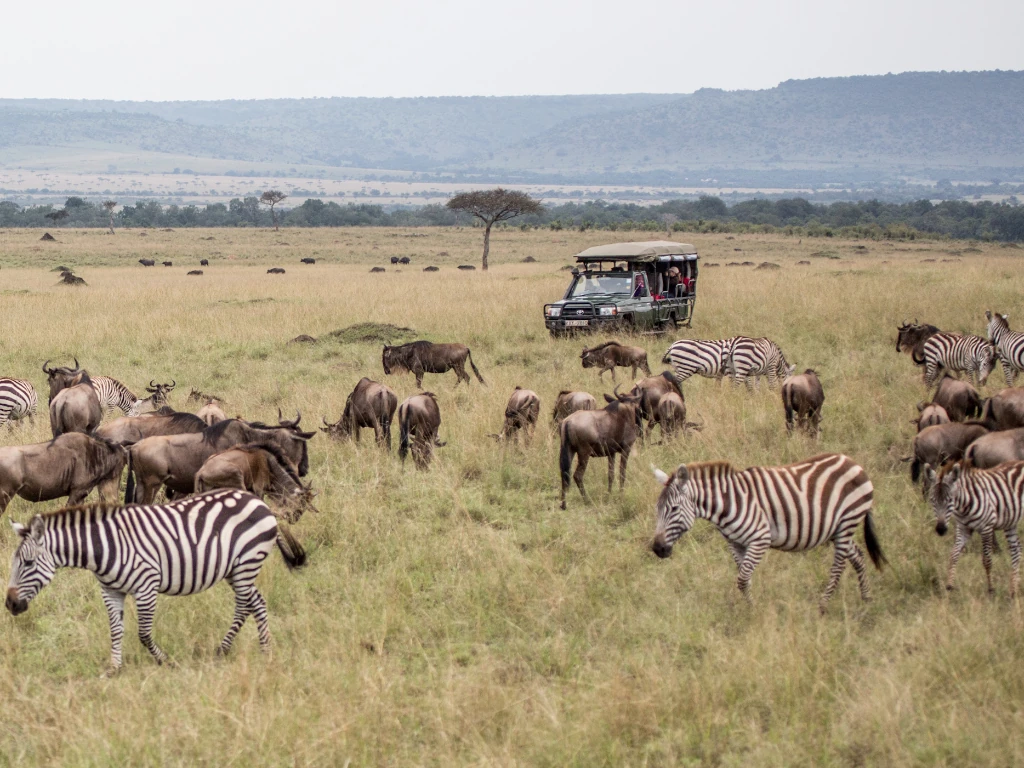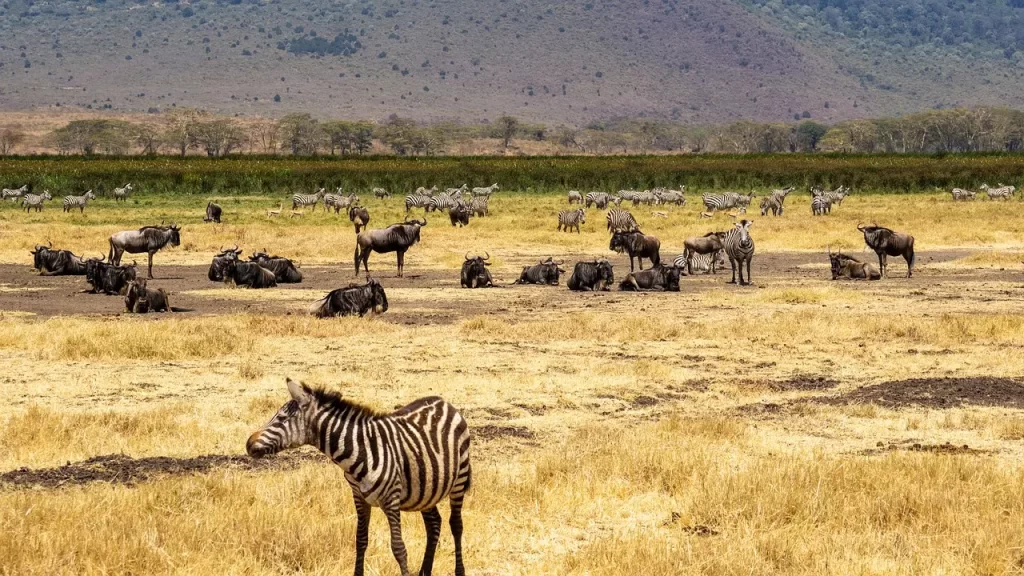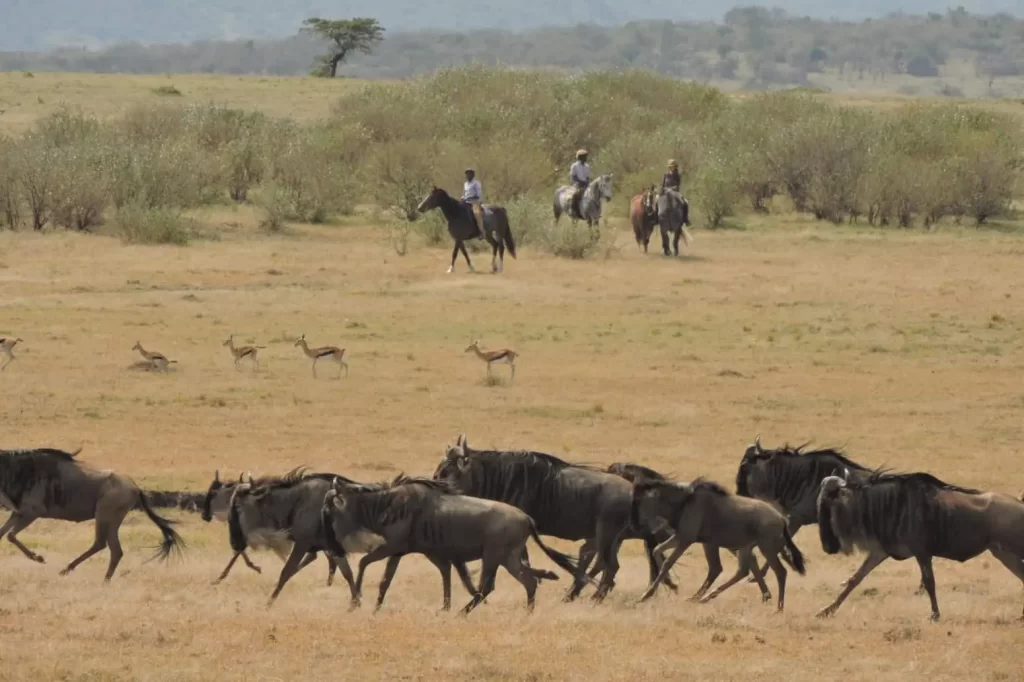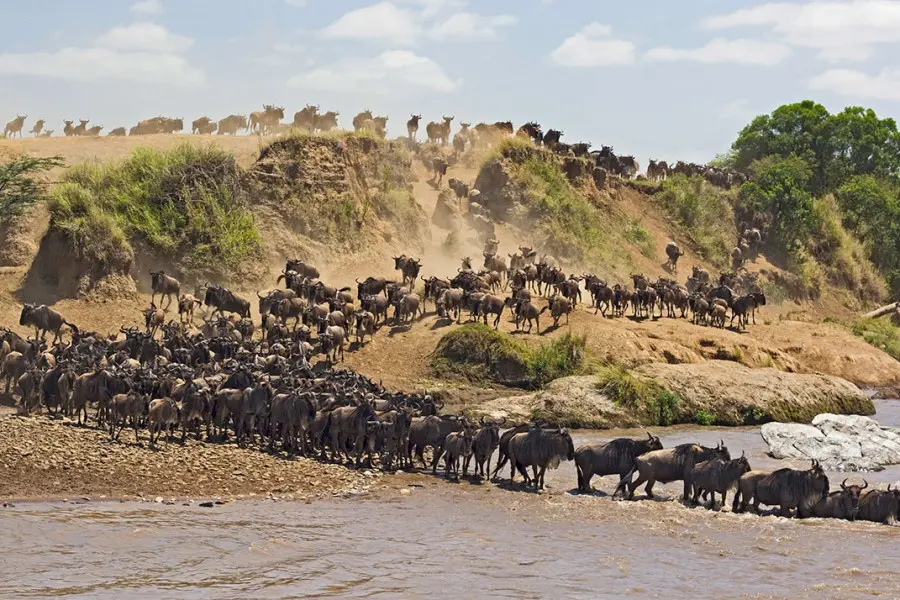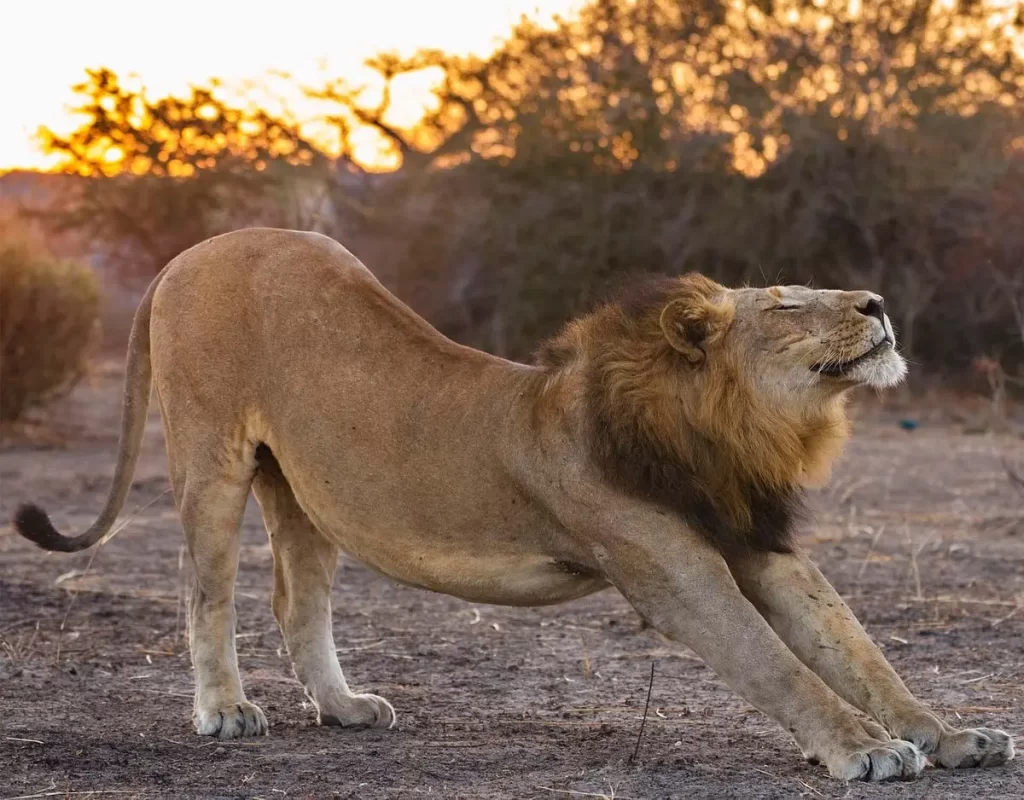The Great Migration Africa - Packages, cost and more

The Great Migration Africa sees millions of wildebeest, zebras, and other ungulates traverse the central Serengeti-Mara ecosystem. This mass movement is not a random act but a meticulously choreographed dance of nature, dictated primarily by the pursuit of fresh grazing and water.
The wildebeest migrate such they are in Serengeti when grass is ample, and as the Serengeti dries up and grass is scarce, they cross the Mara River into Kenya’s Masai Mara National Park where Grass is plenty. The Mara River crossing happens between July and October.
Reach us to Start Planning Your 2024 Masai Mara Wildebeest Migration Tour
The time to plan your Masai Mara Serengeti Migration Safari is now! We invite you to contact us via WhatsApp or phone at +254-704-532-105.
We are also available through email at safarioffers@kenyaluxurysafari.co.uk or safarioffers@ajkenyasafaris.com. If you prefer, you can leave us your details by filling our “Book a Safari Form” and we will get back within 12 hours.
Explore Our Most Booked Masai Mara Luxury Safaris
The Great Migration Africa Videos
But what month is the wildebeest migration? What is the best time to see the Wildebeest Migration River Crossings?
Read on to know the wildebeest calving season, key events in the Great Migration, the best times to visit, more importantly, the strategic locations to witness the greatest animal migration. But it doesn’t stop there, we also understand your personal needs, so we’ll guide you through choosing your accommodation as well.
The Great Migration Africa 2024 – Key Takeaways
- The Great Migration in Africa is an annual movement where millions of wildebeest along with zebras and other ungulates, traverse the Serengeti-Mara ecosystem, driven by the search for fresh grazing and water.
- The Mara River crossing is the most popular part of the wildebeest migration. It happens between July and October in Kenya’s Masai Mara National Park.
- Key events of the Great Migration include the calving season between January and March in Serengeti, where thousands of wildebeest are born daily as the mating season begins, and the perilous Mara River crossing, where herds navigate predator-infested waters.
- Responsible tourism and conservation are essential for preserving the Great Migration and supporting the southern Serengeti-Mara ecosystem, which includes minimizing environmental impact and engaging with local communities.
The Blue Wildebeests – The Stars of the Show
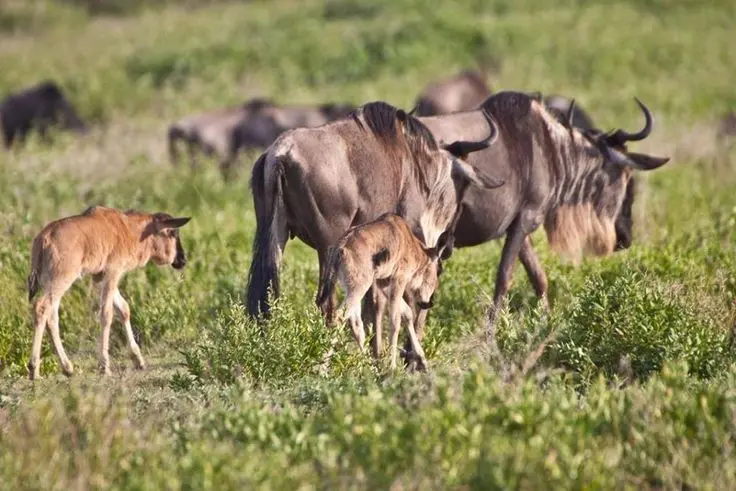
Translated to “wild beast” from Dutch, the eastern white-bearded wildebeest is undoubtedly the main focus point during the Great Migration. These million animals can be recognized by their:
- even-toes
- horns
- grayish-brown appearance
- heavier forequarters
They are a sight to behold in the vast landscapes of the northern Serengeti, especially in the open woodlands during the dry season. Often, these animals graze in smaller herds during the short rains in Kenya.
The wildebeest’s social behavior is as fascinating as its physical appearance. During the migration, they form large groups to reduce predation risk, making predators more visible and decreasing their predation chance. The social structure involves forming groups for both female wildebeest with young and non territorial males, demonstrating the intricacy of their interactions.
It is this unique social behaviour, combined with their incredible endurance, that ensures their survival during the arduous journey of the Great Migration.
The Great Migration Africa
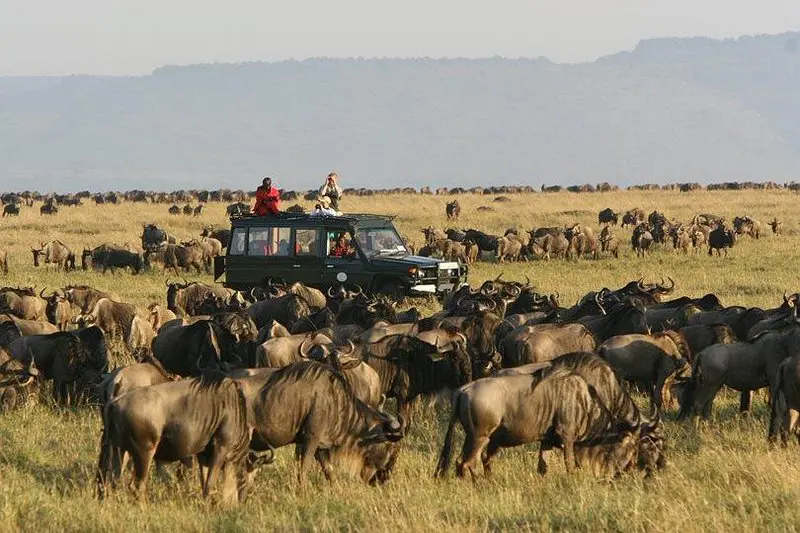
The Great Migration Africa is indeed a phenomenon like no other, an annual spectacle that sees millions of wildebeest, zebras, and other ungulates traverse the central Serengeti-Mara ecosystem.
The blue wildebeest (Connochaetes taurinus) are experts in survival, adapting their movement to the changing seasons of Eastern Africa. Their great wildebeest migration is timed to coincide with the greening of nutritious grasses on the short-grass plains during the wet season, an ideal place for calving due to the ease of spotting predators.
However, as the plains dry up, the wildebeest are compelled to wildebeest migrate across the Grumeti River in search of greener pastures, often embarking on a perilous journey towards the western corridor of Ngorongoro crater.
The Serengeti-Mara Ecosystem
Straddling the borders of northern Tanzania and Kenya, the Serengeti-Mara ecosystem provides an awe-inspiring backdrop for this journey. Renowned for its extensive biodiversity, this ecosystem is a haven for many species, many of which play a crucial role in the survival and occurrence of Serengeti migration.
Its diverse climate’s annual pattern and landscapes characterize the ecosystem, from dense riverine forests along major rivers to expansive rolling plains. These varied terrains present their own challenges and risks as herds cross. Yet, these very challenges make the Great Migration towards the Ngorongoro conservation area such a captivating spectacle. This ensures a continuous cycle of life, the relentless pursuit of survival is optimal in these vast plains, especially for the young calves.
Key Events in the Great Migration
Basically, the key events of the Great Migration include the calving season, during which thousands of newborns join the herds, and the dramatic Mara River crossing. You’ll experience the dramatic scene of predator-prey at the Grumeti River, where crocodiles await to attack wildebeests.
Witnessing these events is a humbling experience that underscores the resilience of these creatures. From calving to the drama of the Grumeti River river crossings, these events are stark reminders of the harsh realities of nature and the relentless struggle for survival that characterizes life on the Serengeti plains. Let’s explore the calving season a little bit.
Calving Season
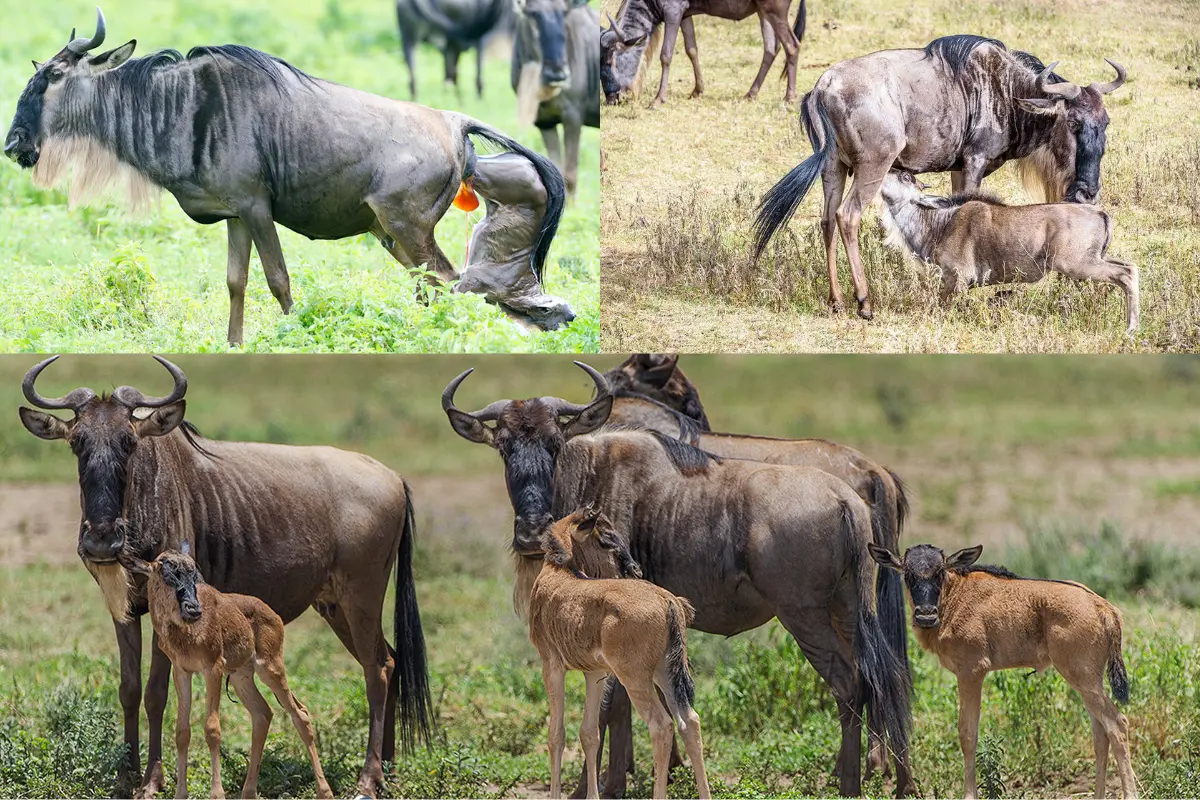
The calving season, typically between January and March, is a time of hope and renewal in the Serengeti. During this period, the daily birth rate of wildebeest calves exceeds 8,000. However, this time of abundance is not without its dangers. The presence of thousands of vulnerable newborn calves attracts a greater prevalence of predators, including the Serengeti’s large felines, jackals, and wild dog packs. Yet, despite these threats, the large herds of a million wildebeest continue to thrive, using various survival strategies.
Mara River Crossing
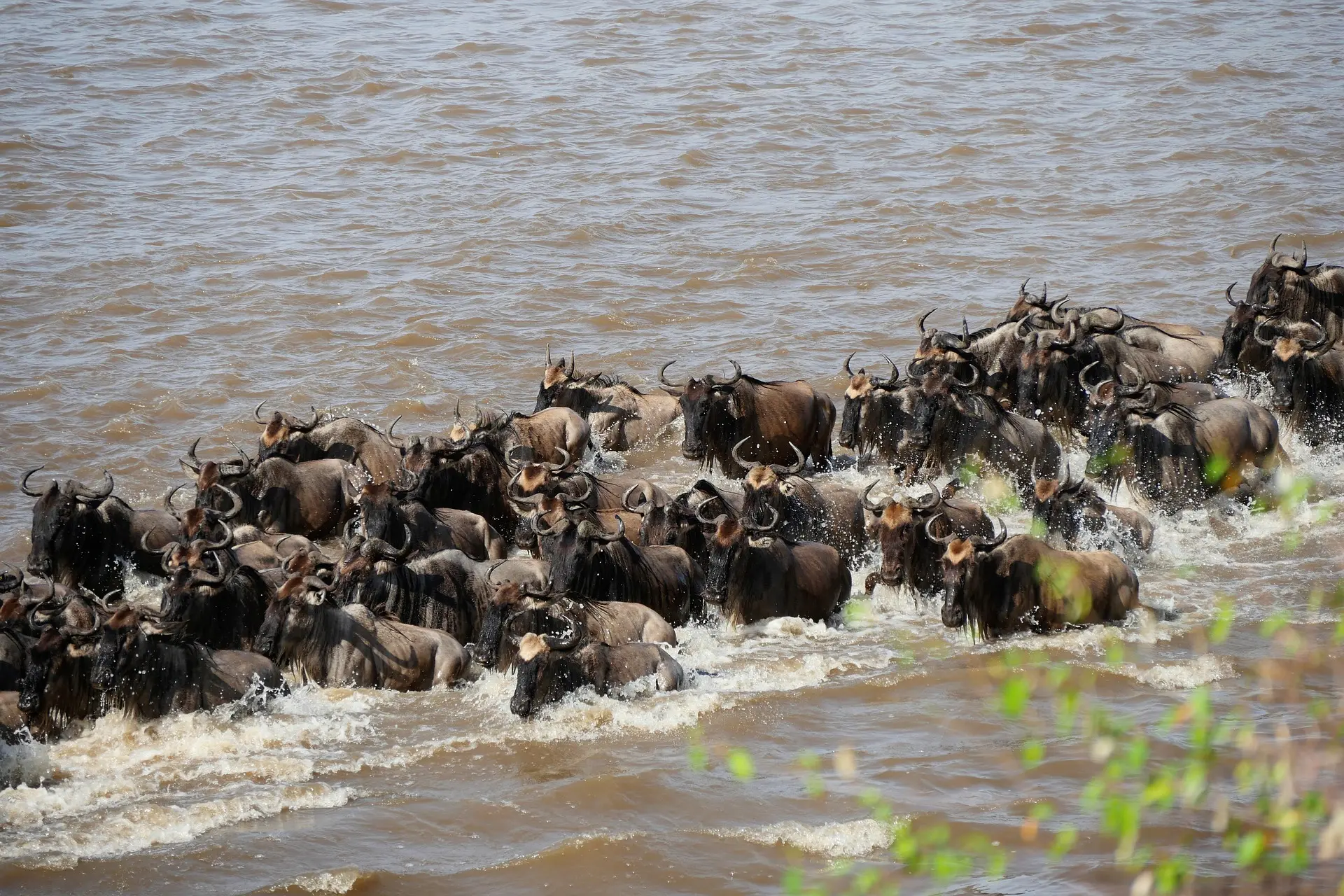
The Mara River crossing is probably the most dramatic event in the Great Migration. This is where the herds face their greatest challenge yet, navigating treacherous waters teeming with crocodiles, strong currents, and steep banks.
This is a pivotal moment in their journey that tests the limits of their endurance and determination. Despite the dangers that lurk beneath the waters and the uncertainty of what lies ahead, the herds press on, driven by the instinctual need to reach greener pastures. This event is a testament to these creatures’ indomitable spirit and relentless pursuit of survival.
Best Times and Places to Witness the Great Migration
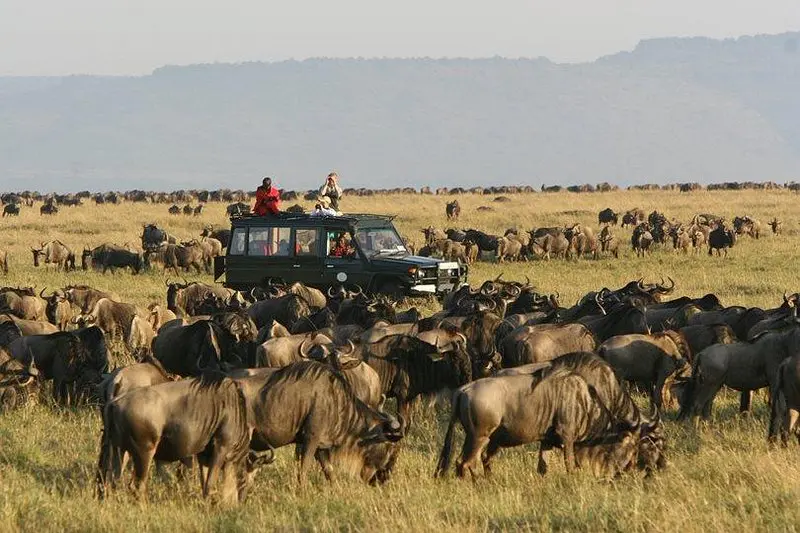
Undoubtedly, witnessing the Great Migration with animals moving south through the age old route as rains begin in the south towards Nyerere National Park is a bucket-list experience. Understanding the optimal times and locations to witness the migration is key to fully appreciating this natural spectacle. Generally, the timing of rainfall influences the movement of the herds throughout the year, as the wildebeest calendar closely aligns with East Africa’s rainy and dry seasons.
Seasonal Guide
This seasonal guide and our recommendations for the top viewing destinations will help you plan your visit to coincide with specific migration events, such as the calving season or the river crossings. Understanding the seasons ensures you don’t miss out on witnessing the birth of thousands of calves during the calving season or observing the herds as they brave the treacherous waters of the Mara River.
The Great Migration follows a seasonal pattern, typically occurring after the short rains in early November and December and again after the rainy season ends in May and June. The climate of the Serengeti-Mara Ecosystem is generally warm and dry, characterized by two rainy seasons, one from March to May and a shorter one later in the year. In fact, these are the best times to visit Serengeti National Park.
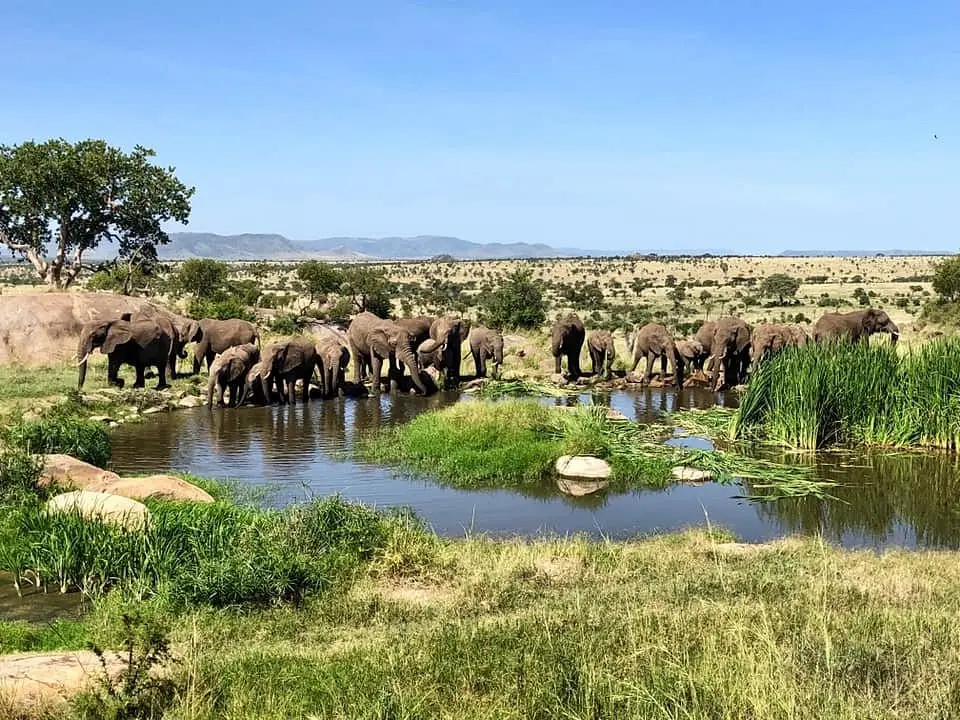
Top Destinations
When it comes to witnessing the Great Migration, location is key. The Serengeti National Park and the Masai Mara National Reserve are the two major hotspots of this great wildebeest migration. Why? These parks are located along the migration route, offering unparalleled wildlife viewing opportunities.
For a less crowded and more intimate experience, you might consider visiting private conservancies neighboring these parks. These conservancies offer excellent wildlife viewing opportunities and contribute to local communities and conservation efforts. By choosing to stay in these areas, you’re not only ensuring a memorable safari experience but also making a direct contribution to preserving this incredible natural spectacle.
Planning Your Great Migration Safari
From choosing the perfect accommodation to deciding on the best time to visit, every decision will shape your safari experience. It’s your opportunity to customize your experience to suit your preferences and budget.
That said, planning a safari comes with its own set of challenges. Various environmental factors influence the Great Migration, making it an unpredictable event. With that in mind, you need some extra cash for additional expenses.
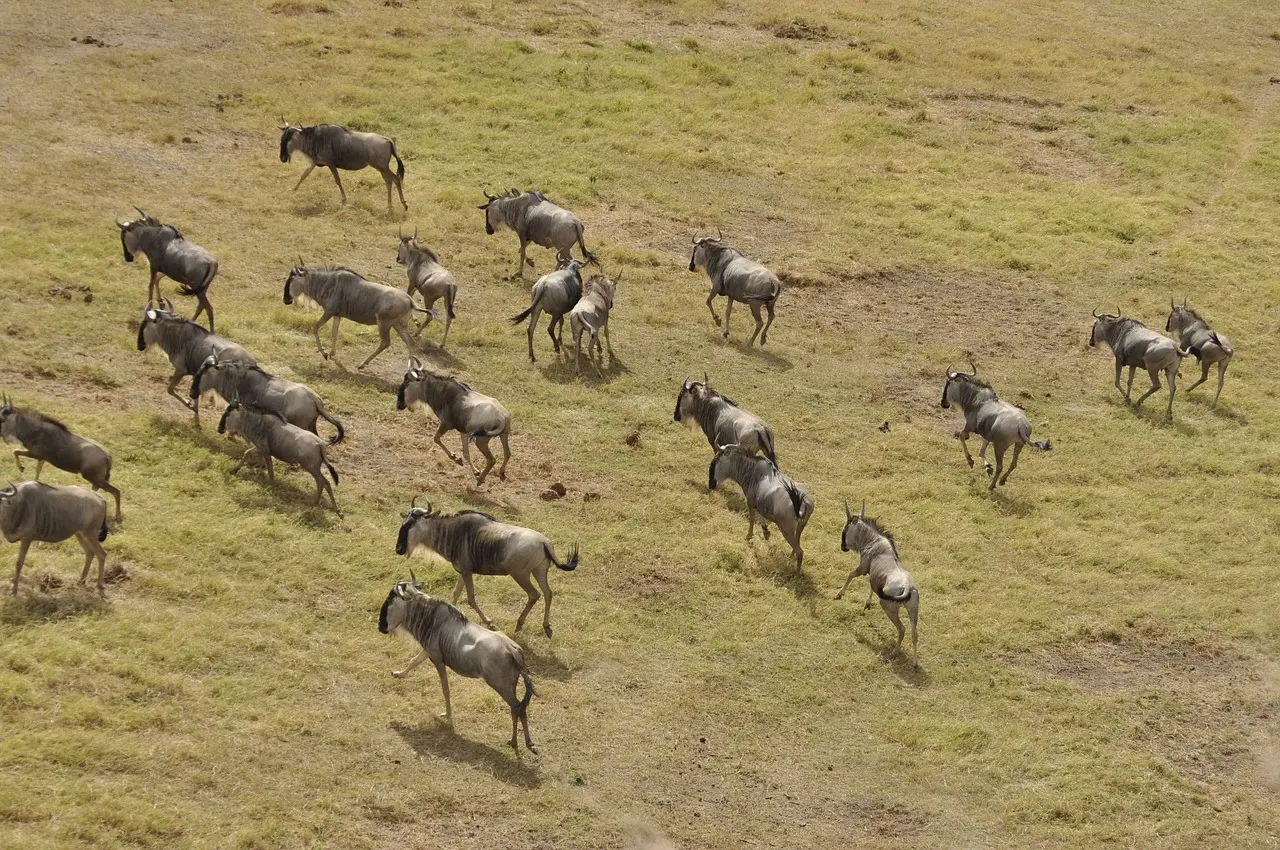
Choosing Your Accommodation
Appropriate accommodation is a critical step while planning your Great Wildebeest Migration safari. Your choice of accommodation can greatly influence your safari experience, from the comfort and service you receive to your proximity to the migration route.
Permanent lodges offer a more structured and potentially more comfortable experience. However, mobile camps are an excellent choice if you prefer a more adventurous and immersive experience. These camps follow the herd, ensuring you’re always in the heart of the action. Additionally, they often offer a range of safari experiences, from walking safaris to cultural interactions with local communities.
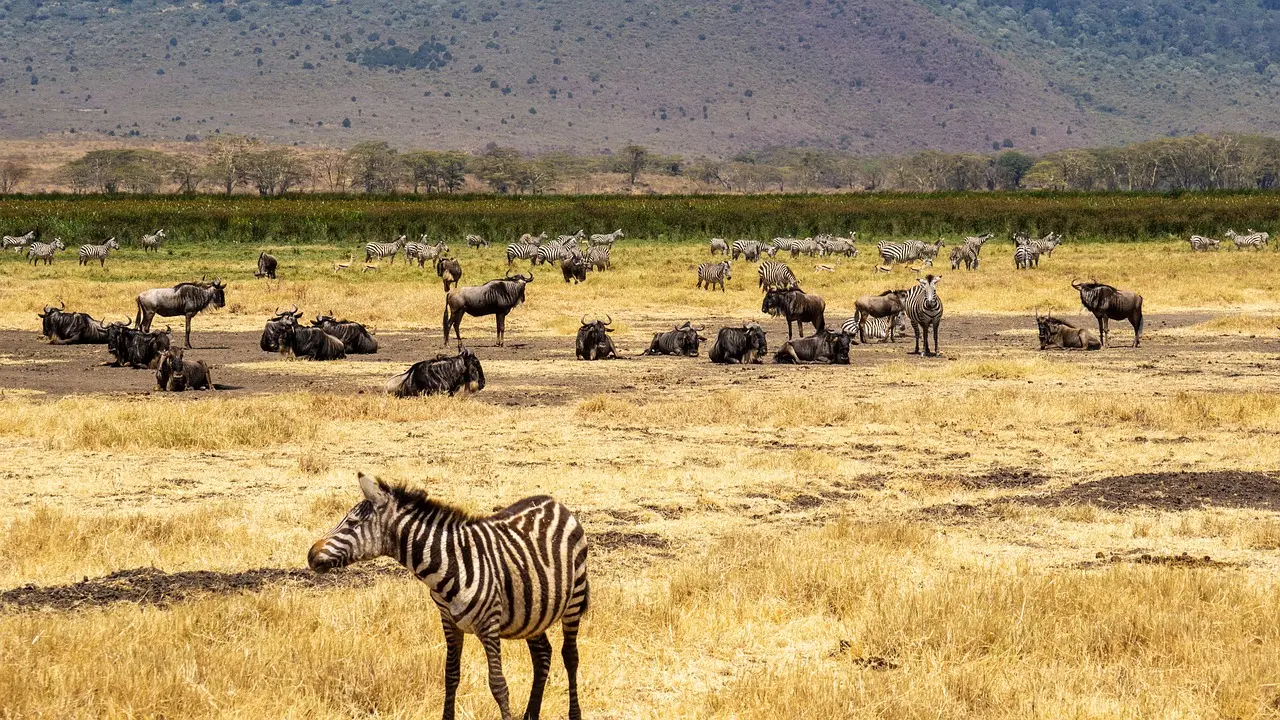
Customizing Your Safari Experience
Customizing your Masai Mara safari experience allows you to:
- Create a trip that perfectly matches your interests and preferences
- Focus on specific events, such as the calving season or the Mara River crossing
- Explore other wildlife encounters
Moreover, it allows you to create your dream safari as you witness the wildebeest head north of Tanzania. In addition to following the Great Migration, you might also want to explore other destinations, such as:
- Amboseli National Park
- Laikipia
- the Ngorongoro Crater
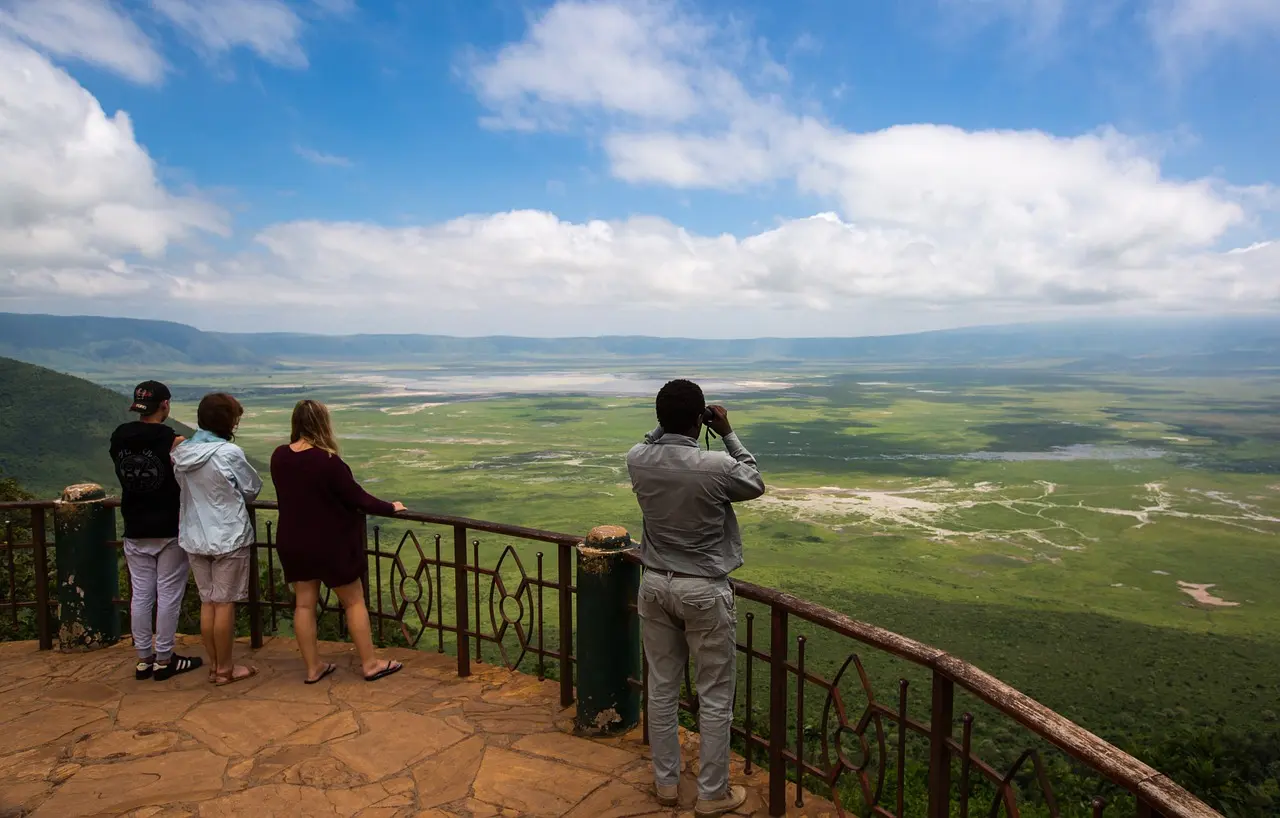
Incorporating these areas into your itinerary will enhance the diversity of your game-viewing and provide you with a more comprehensive understanding of East Africa’s diverse ecosystems and wildlife.
Wildlife Encounters Beyond the Great Migration
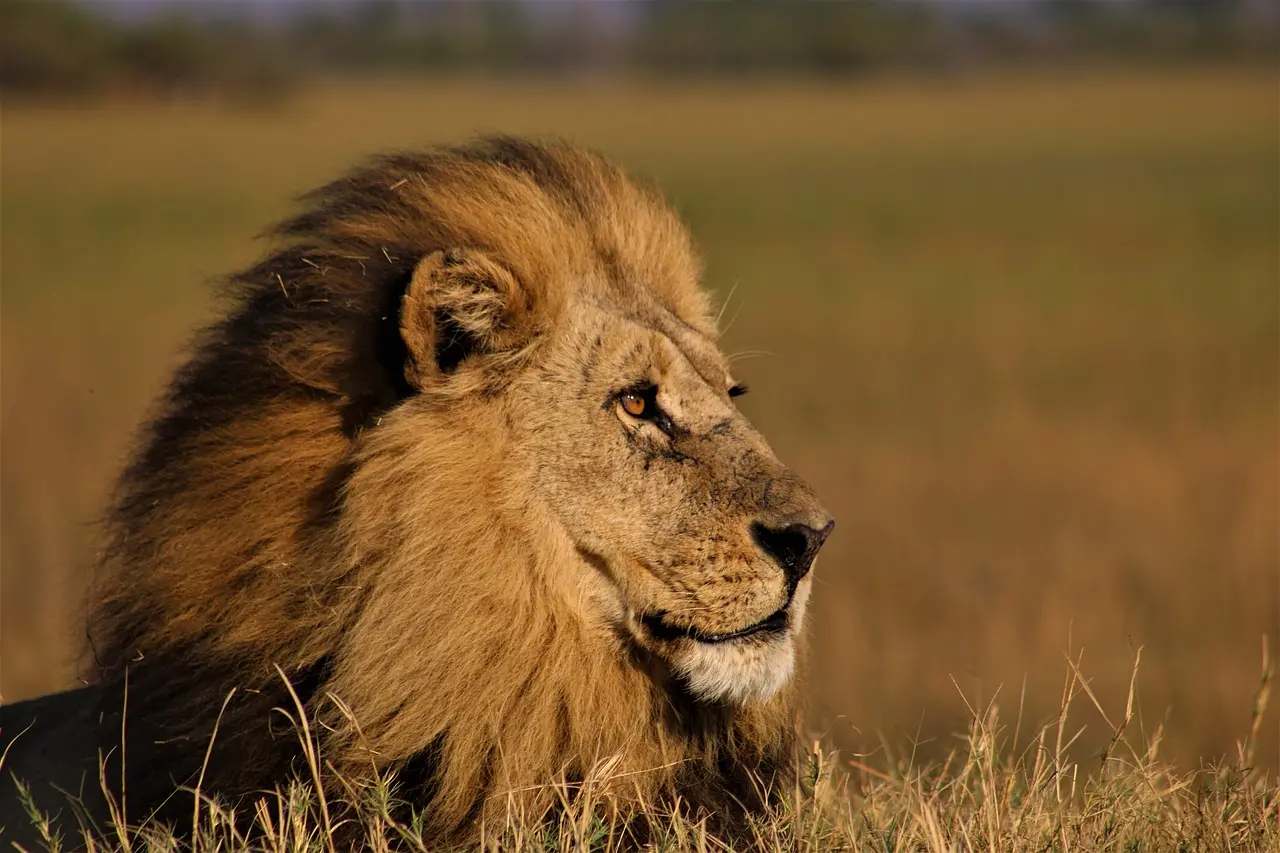
Despite the wildebeest migration across the Grumeti River being the star attraction, the Northern Serengeti-Mara ecosystem hosts diverse animals beyond the migrating herds. From the majestic big cats that stalk the plains to the unique antelope species that share the migration journey, a world of wildlife awaits discovery.
These additional wildlife encounters will even make your safari experience more thrilling. Whether you’re marveling at the pride of lions on a hunt or observing the graceful movements of a herd of gazelles, these experiences will immerse you in the rich tapestry of life that unfolds on the Serengeti plains.
Big Cats and Predators
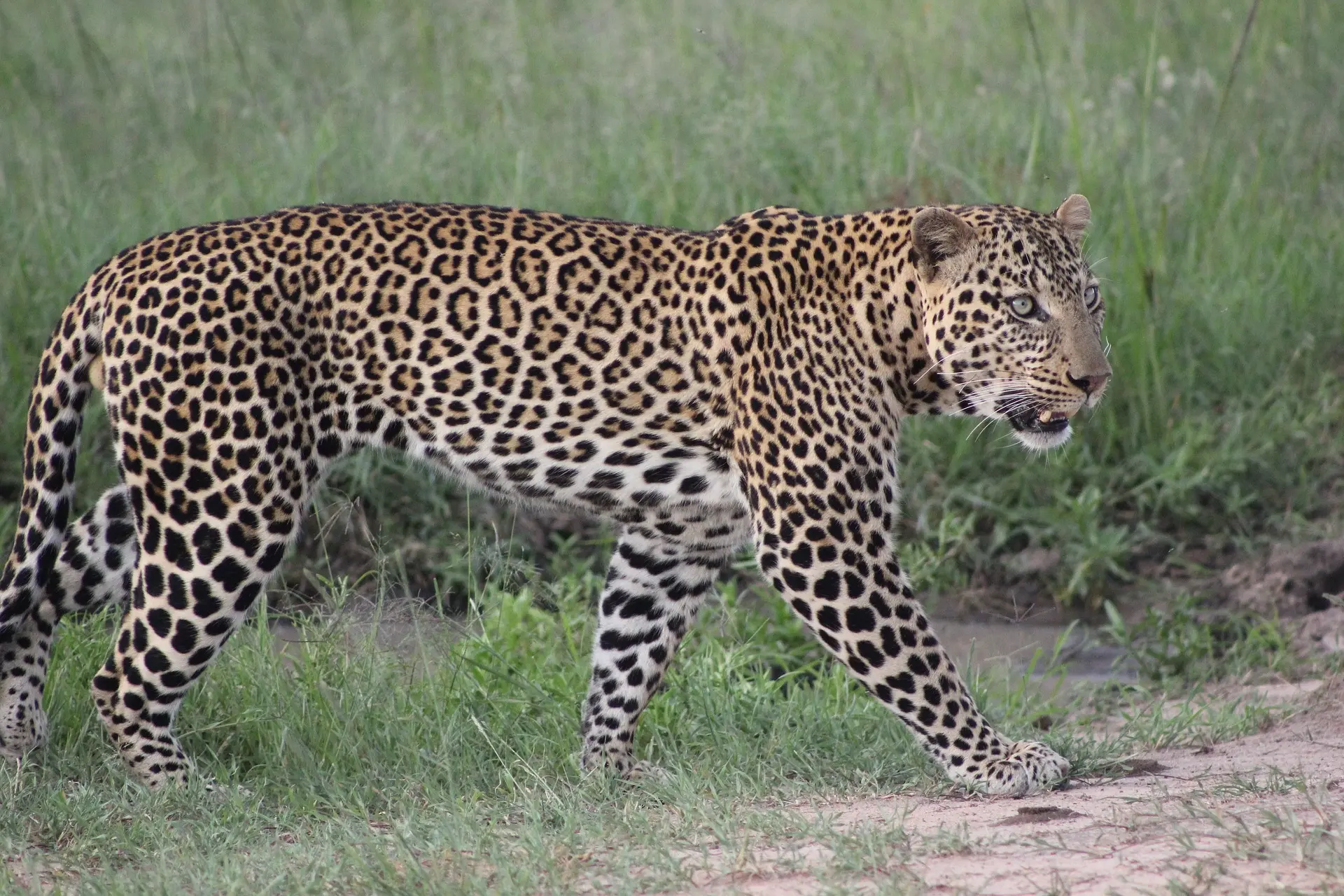
The Serengeti-Mara ecosystem has various predators, including lions, leopards, and cheetahs. You’ll often see these big cats stalking the migrating herds, turning the northern Serengeti plains into a thrilling theater of survival.
Observing these predators in action is the highlight of any safari, especially in the short grass plains of Masai Mara. Whether it’s a cheetah sprinting across the plains in pursuit of a gazelle or a lion pride coordinating a hunt, you can’t afford to miss that. It’s just a thrilling glimpse into the raw and often ruthless world of nature.
Unique Antelope Species
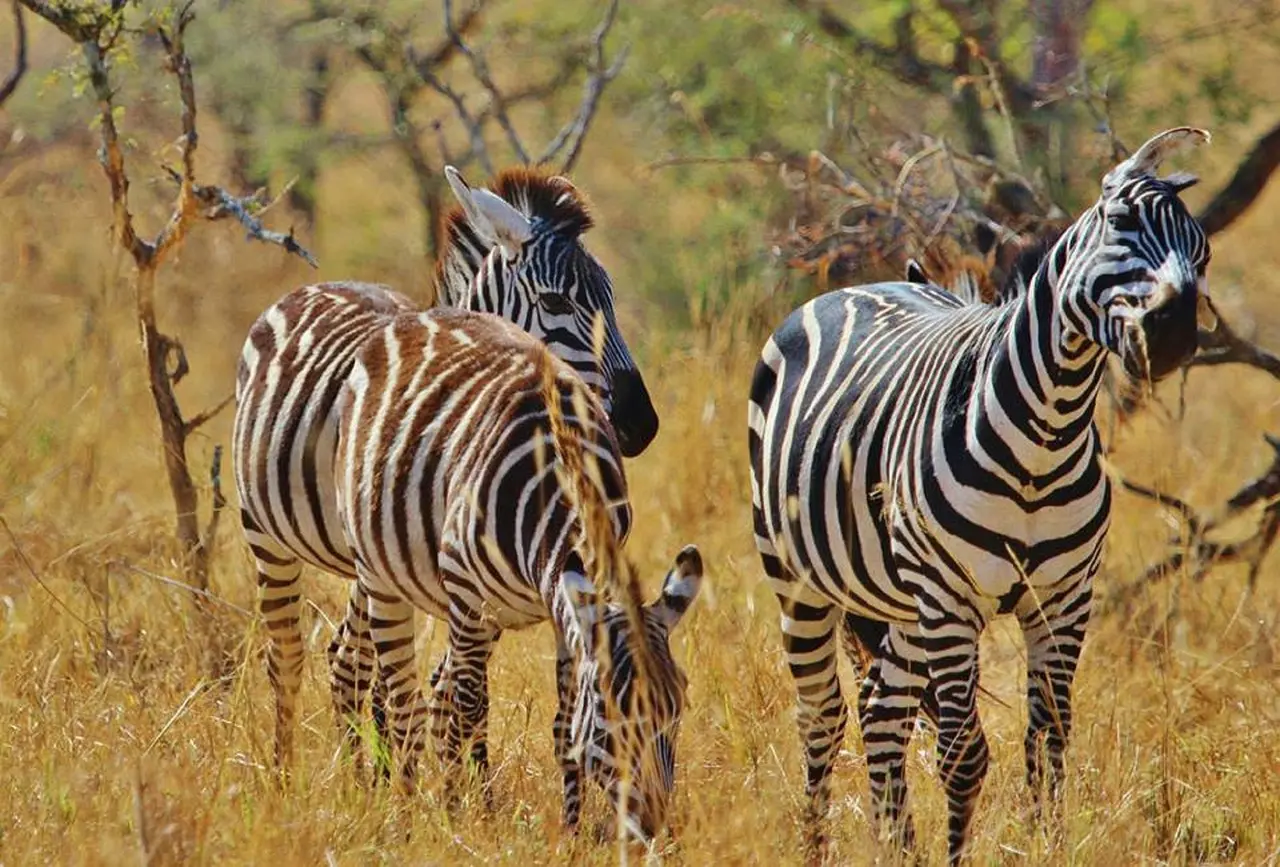
In addition to the wildebeest, the Great Migration involves several unique antelope species in the national park like:
- Eland
- Lesser kudu
- Reedbuck
- East African oryx
- Grant’s gazelle
- Thomson’s gazelle
- Waterbuck
Each of these species adds a unique touch to the animals’ migration, enhancing the diversity of the wildebeest migration from the short grass plains of Serengeti.
And the best part? Each species has unique behaviours and adaptations to the environment. For instance, the Eland’s distinctive tawny colouration to the impalas’ unique social structure from the rest. Generally, these species offer a wealth of wildlife viewing opportunities, providing a deeper understanding of the complexity and diversity of life in the Serengeti National Park.
Responsible Tourism and Conservation Efforts
While the walking safaris are awe-inspiring, the importance of responsible tourism and conservation efforts cannot be over-emphasized. The survival of this natural spectacle depends on preserving the central Serengeti migration.
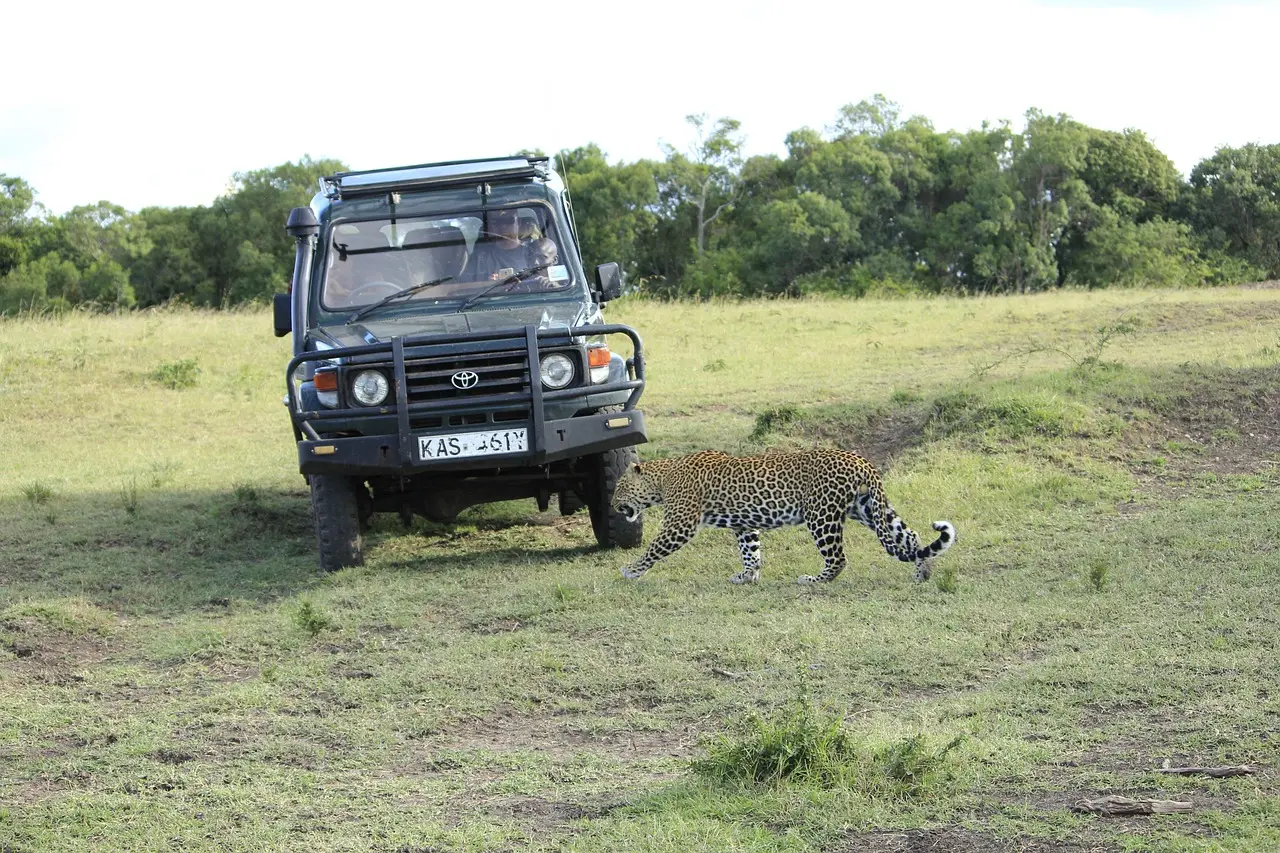
From supporting community-owned conservancies to minimizing your environmental impact, there are several ways you can contribute to the sustainability of Serengeti National Park. So, let’s see how to achieve this.
Minimizing Environmental Impact
Minimizing your environmental impact during your Masai Mara safari is one of the key ways to contribute to conservation efforts. You can achieve this through various measures, including choosing eco-friendly accommodations, reducing waste, and following responsible wildlife viewing guidelines.
For instance, choosing an eco-friendly safari accommodation can make a big difference. These accommodations employ local staff, contribute to the community’s income and skill development, and use sustainable materials in their construction. Choosing such accommodations reduces your environmental footprint and contributes to local economies and conservation initiatives.
Supporting Local Communities
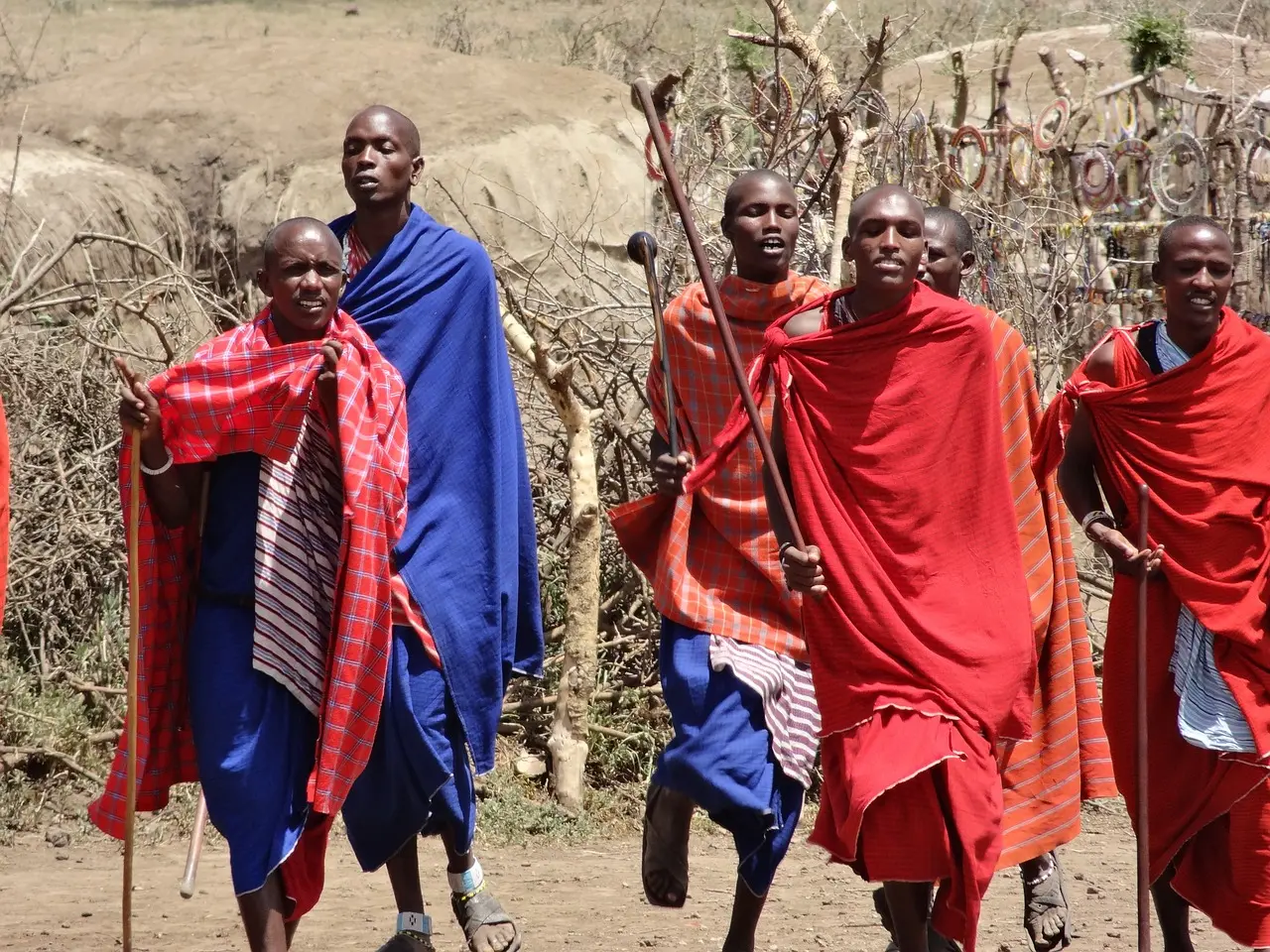
Another critical aspect of responsible tourism is supporting local communities. From visiting community-owned conservancies to purchasing local products, there are several ways you can contribute to the well-being of these communities. Guess what? The local communities are generally believed to be residing around the park for a long period. Therefore, you can get more information about the blue wildebeest migration of Masai Mara just by inquiring from them.
Participating in cultural experiences is also a great way to support local communities. Whether you’re visiting a traditional Maasai village or engaging in a community-led wildlife conservation project, these experiences help to foster a sense of mutual respect and understanding between tourists and residents, contributing to the overall sustainability of the region.
Summary
The Great Migration Africa is more than just an annual movement of wildebeest across the Serengeti-Mara ecosystem. From the birthing of thousands of calves to the perilous river crossings, every stage of the Great Migration offers a unique and unforgettable safari experience. Also, important planning and accommodation go hand in hand with having a great experience.
Yet, as awe-inspiring as this spectacle is, we must remember our role in its preservation. Through responsible tourism and conservation efforts, we can ensure the survival of this natural spectacle for generations to come. Whether choosing eco-friendly accommodations, supporting local communities, or simply respecting the wildlife and their habitats, every action counts. After all, the Great Migration is not just a journey, it’s a celebration of life in all its raw and unfiltered glory.
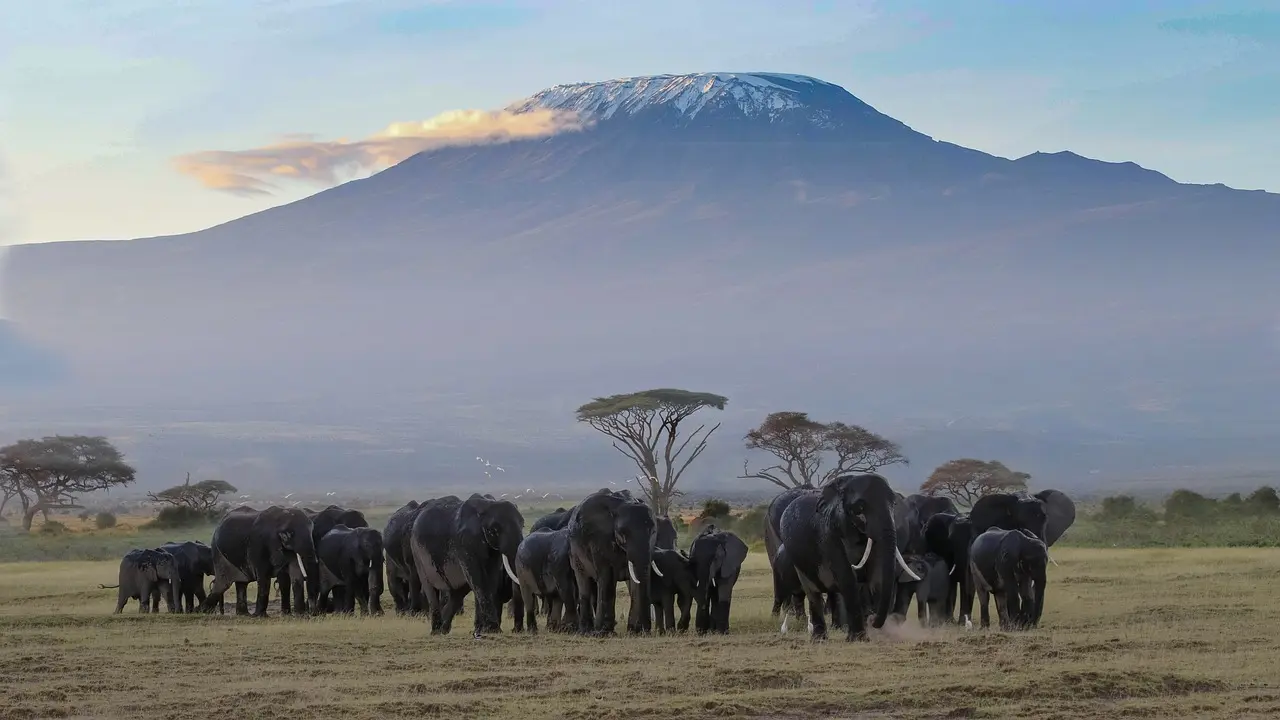
Frequently Asked Questions
Next, we look at the most common questions we get about the Great wildebeest migration in Africa.
What is the Great Migration of Africa?
The Great Migration of Africa is the annual migration of millions of wildebeest, zebra, gazelle, and other animals across Kenya and Tanzania, creating a spectacular natural phenomenon.
What month is the Great Migration in Africa?
The best months to see the Great Migration in Africa, particularly in Tanzania’s Serengeti National Park, are November through September.
How far is the Great Migration in Africa?
The Great Migration in Africa spans a year-long, 1,200-mile journey through Tanzania and Kenya. It is a continuous movement rather than an annual event.
Which is the best place to see the Great Migration?
The best place to see the Great Migration is East Africa, specifically in the Mara, Ngorongoro Crater, and Serengeti regions, which span Kenya and Tanzania.
Is a wildebeest a cow?
No, a wildebeest is not a cow. It is a member of the antelope family, but its appearance may resemble that of a cow due to its heavy build and large forequarters.


